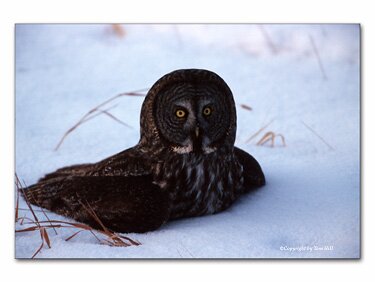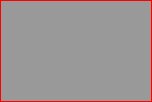

All Images And Text On This Site Are Copyright 1999-2001
by
Thomas D. Hill Jr.

| ABOUT KEIKO |
| WHAT'S NEW |
| THE KEIKO GALLERY |
| EQUIPMENT |
| IMAGE OF THE MONTH |
| ARTICLE OF THE MONTH |
3 September 2001
Most folks new to serious photography havent quite grasped the basic characteristics of exposure. The concepts arent very difficult. In fact, with a bit of practice you can become an expert in no time at all. Fortunately, photography and the technology that supports it is at a stage today require minimal understanding of exposure. Practically no in-depth knowledge is required to take acceptable images. I think 75% of the time, depending on the cameras built-in automatic modes will work. Those are pretty goods in the greater scheme of things. What about the last 25%? What do you have to know to get proper exposures 100% of the time? Thats a good question and this lesson will start you on the right path by helping you first understand the meter in you camera.
Photographers measure light two different ways. The first is incident and the second, reflective. Incident light meters measure the light before it strikes the subject. Usually those meters are hand held and are distinguished with a small white dome covering the meter window. The idea here is the incident meters measure the total amount of light striking the subject and gives you a proper exposure based on the incident light. The beauty of these kinds of meters is the color of the subject doesnt affect the meter reading. In fact, if the light your reading is the same as whats hitting the subject, your exposure will generally be spot on. In a physical sense, the total light energy is being measured. From this an Exposure Value (EV) determined. In ancient times you couldve called it Candle Power instead of EV. In photography circles, EV works great. After this, the films light sensitivity (ISO) is compared to this EV and a proper shutter speed and aperture is determined. All in all, a fairly simple and reliable process.
There are problems with this metering approach. First, as I already mentioned incident meters are essentially handheld. This is a serious drawback for most nature photographers who shoot non-static subjects like birds and such. Second, you have to meter the same light thats hitting your subject. If you happen to be in the shade when taking your reading it will be way off. For that matter, if the subject is in the shade and youre in the sun, the reading will be off once again. If youre into long lens photography, its likely the light thats illuminating the area you're standing is significantly different than what your subject is enjoying. So, who uses these meters? Lots of fashion/studio photographers and anyone else that has consistent light and static subjects. In many circumstances, landscape photographers use Incident Meters with great success.
To combat the problems mentioned with incident meters, reflective meters were developed. In fact, theyre very common among Single Lens Reflex (SLR) cameras that populate most nature photographers camera bags. Instead of being forced to read the same light your subject is enjoying, reflective meters are designed to read the light being reflected right of the subject. The beauty of this approach is very precise meter readings can be made of specific areas of the subject. For example, a photographer could precisely read the light and dark portions of a high contrast subject. With this info and bit of basic photography knowledge, a photographer could adjust his exposure settings to tweak the final exposure to make really great images.
Built-in reflective meters were a "god-send" to wildlife photographers. Very precise readings can be made regardless of the lens being used. The idea here is the meter takes its readings through the lens unlike the incident meter. Regardless of whether a 24mm wide-angle or a 600mm super-tele is being used, built-in reflective meters act the same. Little or no adjustments are needed whenever lenses are changed. This all points to how responsive reflective light meters are for most Nature Photographers. As a side, reflective meters are available as handheld models not just inside of SLR's. All types are available in these handheld version including some which sport a spot meter capability which gives tremendous flexibility to photographers.



The reason for this is basic reflective light meters are calibrated to neutral gray. What that means is the meter assumes the subject is neutral gray and figures out the exposure according. If somehow it knew the subject was pure white, the meter would add some exposure to make the whites look white. The opposite is true for those really deep blacks. But, since these meters arent that smart and cant tell what the tone is, youthe master photographerhas to make the compensations yourself. You will have to add or subtract as appropriate.
Another intersting notion with this tone problem is related to the ambient light. Have you ever thought what white looks like in low light? It most likely looks gray. For that matter, white in the middle of the night looks black. So, the problem here isn't just about the tone of the subject but also what the ambient light is doing. That's where you, the master photographer comes into play. You have to identify where you want the tone to reside.
For example, let's say you're shooting a snow scene and it's at dusk. You want to keep the characteristics similar to what your see and you goal is to expose the scene to meet that goal. Well, since it's already almost gray because of the reduced ambient light, you may not have to do anything. Now, let's say you're in the same situation and want to lighten things up a bit, more than what the scene actually is. Then you have to add some exposure. How much is up to you and what you're trying to achieve. The same logic applies to blacks and other tones. One other thing to remember is this tone problem doesn't just reside with white and black. You can have the same problem with any other color. Most people say that green grass is just about a neutral color. Well, that works for averaged toned grass. There are lots of grasses out there that are brighter and darker than the typical medium tone green. So, you have to worry about this for all colors.
How do you remember what to do and when. Well, first repeat this saying to yourself whenever youre out in the fielddont worry, Ive been known to mutter it to myself on occasion:
A light subject wants to be lighterthis means add exposure.
A dark subject wants to be darkerthis means subtract exposure.
Now you know whether to add or subtract. Identifying when to add or subject is a bit more difficult. First trick I learned is to throw your subject totally out of focus so that all you see is a blur. If the blur is average, then great you dont have to do anything. If its a bit darker, you might have to subtract a third or two stops. If its lighter, you add a third or two. Throwing it out of focus removes any distracting elements so it becomes much easier to assess a subjects characteristics.
The good in all this is 75% of the time, the subjects are close enough to neutral gray that no compensation is necessary. When its required, compensation is simple and easy to do. Anyone can do it.
So, there you have it; metering basics. Hopefully, most of your subjects are neutrally gray and no compensation is required. Life could be so easy, or life would be so dull. Remember, if it wasnt a challenging it wouldnt be interesting.
Cheers
Tom